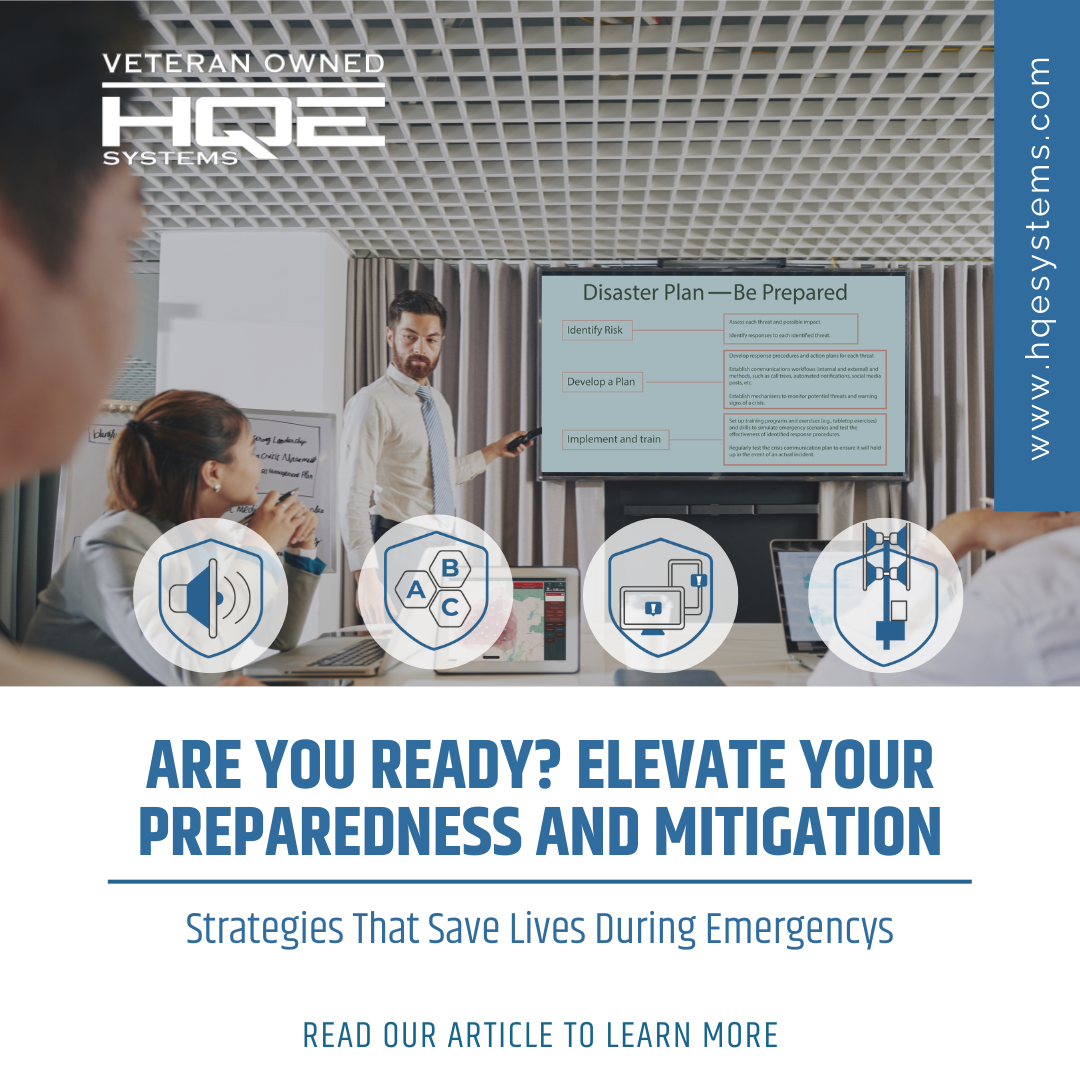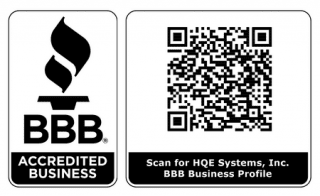A Tale of Two Floods: The Stark Contrast of Disaster Preparedness
Imagine the chaos when a flood hits a small community—roads submerged, homes ruined, lives at risk. Now picture a different scene where despite heavy rains, a town remains virtually unscathed thanks to proactive flood mitigation measures like elevated structures and well-executed evacuation plans. This isn’t just a tale of two cities; it’s a testament to how effective emergency planning and mitigation can turn potential disasters into manageable incidents, showcasing the power of preparation and strategic foresight.
Part 1: The Crucial Role of Advanced Planning and Mitigation in Emergency Management
In the face of natural disasters, the difference between catastrophe and manageability often hinges on the foresight of emergency planning and the robustness of mitigation strategies. Strategic planning and effective mitigation not only safeguard lives but also conserve resources, minimize economic disruptions, and maintain community resilience.
and manageability often hinges on the foresight of emergency planning and the robustness of mitigation strategies. Strategic planning and effective mitigation not only safeguard lives but also conserve resources, minimize economic disruptions, and maintain community resilience.
Strategic Importance of Planning and Mitigation
Advanced planning is essential for anticipating potential emergencies and instituting preventive measures. It involves identifying risks, assessing vulnerabilities, and creating comprehensive response strategies that accommodate various disaster scenarios. This proactive approach is crucial because it allows communities to increase their preparedness, streamline response efforts, and expedite recovery processes.
Robust Mitigation Measures
Mitigation goes hand-in-hand with planning. It focuses on reducing or eliminating the risks to people and property from future disasters. Measures can include building flood defenses, enforcing stringent building codes, retrofitting infrastructure, or even relocating communities from high-risk areas. Effective mitigation strategies are tailored to local conditions and integrated into the broader urban and regional planning initiatives.
Case Study: North Carolina’s Proactive Flood Planning
North Carolina’s approach to flood mitigation exemplifies how structured planning and community involvement can significantly enhance a state’s resilience. After experiencing devastating floods, the state implemented comprehensive hazard mitigation initiatives that included creating detailed floodplain maps, enforcing elevated construction practices, and investing in community education programs. These measures not only reduced the physical and financial impacts of subsequent floods but also fostered a culture of preparedness among residents and local governments.
Such initiatives demonstrate that with the right planning and mitigation strategies, communities can transform their vulnerabilities into strengths, turning potential disasters into mere incidents that are manageable and less disruptive. The success seen in North Carolina can serve as a blueprint for other regions aiming to bolster their defenses against the unpredictable forces of nature.
mitigation strategies, communities can transform their vulnerabilities into strengths, turning potential disasters into mere incidents that are manageable and less disruptive. The success seen in North Carolina can serve as a blueprint for other regions aiming to bolster their defenses against the unpredictable forces of nature.
For more detailed examples and further exploration of effective mitigation strategies, you can visit FEMA’s Case Study Library.
These principles of emergency management are crucial for safeguarding communities and ensuring rapid recovery from disasters, underscoring the need for continuous improvement and adaptation of mitigation and planning strategies in the face of evolving environmental challenges.
Part 2: Common Pain Points for Emergency Managers
Emergency management is a high-stakes field where quick, coordinated action is crucial. Yet, several recurring challenges can hamper the efficiency and effectiveness of disaster responses. Addressing these pain points, as evidenced by FEMA’s best practices, is key to enhancing emergency management operations.
Data Silos
A major issue in emergency management is data silos within organizations. Critical information often remains trapped within individual departments, hindering efficient flow and decision-making during crises. When data isn’t shared across platforms, responses can be fragmented and slow, which can worsen the effects of disasters.
Case Study on Breaking Down Data Silos
Success in overcoming data silos often involves integrating centralized data systems that facilitate real-time data sharing across various agencies. Implementing geographic information systems (GIS) alongside local emergency plans, for example, allows for real-time mapping and more effective resource allocation. Such integrations not only streamline response efforts but enhance situational awareness, fundamentally changing the dynamics of emergency responses.
Slow Response Times
The speed of an emergency response can significantly affect the outcome of disaster scenarios. Delays in mobilization or decision-making can lead to more severe damage and higher casualty rates. Factors contributing to slow response times include outdated systems, lack of preparedness, and procedural inefficiencies.
Improving Response Times through Technology
Technological solutions like automated alert systems and AI-driven predictive analytics have proven effective in accelerating emergency responses. These systems can swiftly analyze incoming data and disseminate necessary information to both decision-makers and the public, markedly reducing the time taken to respond.
Coordination Difficulties
Coordinating a response to large-scale emergencies involves multiple agencies and is inherently complex. Varied protocols, capabilities, and resources can lead to inefficiencies and conflicts, undermining the collective response effort.
Enhanced Coordination through Joint Training and Unified Protocols
Effective responses often stem from robust pre-disaster planning, including joint training programs and unified response protocols. Regular multi-agency drills and clear communication channels improve interoperability and coordination, essential in crisis situations.
Example from FEMA’s Best Practices
An exemplary initiative involves regions where multiple jurisdictions developed shared services agreements before disaster seasons. Such agreements facilitated efficient resource sharing—including personnel, equipment, and data—during emergencies, enhancing coordinated responses and operational effectiveness.
Extended Communication and Resource Management
Improving emergency management also involves enhancing communication strategies and resource management. By adopting advanced communication technologies and resource tracking systems, emergency managers can maintain clear lines of communication and ensure that resources are optimally allocated during emergencies, addressing both immediate needs and long-term recovery efforts.
Conclusion
By addressing these common challenges through strategic deployments of technology, enhanced training, and improved coordination, emergency management can significantly improve disaster response outcomes. Learning from past successes, such as those documented by FEMA, provides valuable insights that can help emergency managers meet the demands of their critical roles more effectively.
Part 3: Technological Solutions in Emergency Management
In the realm of emergency management, technology has emerged as a cornerstone, transforming response strategies and improving outcomes. The deployment of modern tools such as real-time data analytics, cloud-based communications, and AI-driven predictive models has significantly revolutionized the field. These advancements not only accelerate response times but also enhance the precision and effectiveness of disaster management efforts.
Real-time Data Analytics
Real-time data analytics has become indispensable in emergency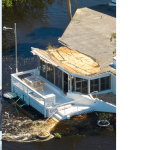 management, providing immediate insights into evolving situations. This technology processes vast amounts of data to identify patterns and potential threats quickly, enabling informed decision-making in critical times. For example, during the response to Hurricane Sandy, real-time analytics helped emergency responders track the storm’s impact across multiple states, facilitating a coordinated response that prioritized areas most in need.
management, providing immediate insights into evolving situations. This technology processes vast amounts of data to identify patterns and potential threats quickly, enabling informed decision-making in critical times. For example, during the response to Hurricane Sandy, real-time analytics helped emergency responders track the storm’s impact across multiple states, facilitating a coordinated response that prioritized areas most in need.
Cloud-based Communications
The adoption of cloud-based communications has ensured that crucial information can reach all relevant stakeholders efficiently, regardless of their physical locations. This system supports the unimpeded flow of information and enhances collaboration across various agencies and emergency response teams. The 2017 wildfires in California demonstrated the value of cloud-based systems, where they enabled continuous communication despite traditional infrastructure being compromised by fires, ensuring that emergency services could operate effectively under extreme conditions.
crucial information can reach all relevant stakeholders efficiently, regardless of their physical locations. This system supports the unimpeded flow of information and enhances collaboration across various agencies and emergency response teams. The 2017 wildfires in California demonstrated the value of cloud-based systems, where they enabled continuous communication despite traditional infrastructure being compromised by fires, ensuring that emergency services could operate effectively under extreme conditions.
AI-driven Predictive Models
AI-driven predictive models leverage historical data and machine learning techniques to anticipate the impact of disasters. This foresight allows for proactive preparations and timely responses. In flood-prone areas, such as the Mississippi River basin, AI models predict flood events with high accuracy, enabling preemptive evacuations and strategic placements of response resources, significantly mitigating potential damage and loss of life.
GIS Technology in Hazard Mitigation
Geographic Information Systems (GIS) are another pivotal technological tool in hazard mitigation. FEMA uses GIS to map disaster areas and visualize complex datasets, including population density, infrastructure vulnerability, and historical disaster data. This spatial analysis is crucial for planning evacuation routes, positioning emergency shelters, and deploying response units where they are needed most.
technological tool in hazard mitigation. FEMA uses GIS to map disaster areas and visualize complex datasets, including population density, infrastructure vulnerability, and historical disaster data. This spatial analysis is crucial for planning evacuation routes, positioning emergency shelters, and deploying response units where they are needed most.
Integration with FEMA’s Technological Implementations
FEMA has integrated these technologies into its operations to enhance its mitigation efforts effectively. The agency’s IPAWS (Integrated Public Alert and Warning System) uses cloud-based communications to send out nationwide emergency alerts, ensuring quick dissemination of critical information. Furthermore, FEMA’s HAZUS program, a GIS-based risk assessment tool, models potential losses from disasters, helping communities prepare and mitigate effectively.
Conclusion
As technology continues to evolve, its integration into emergency management represents a critical advancement in public safety and disaster response. By harnessing the power of real-time analytics, cloud computing, AI, and GIS, emergency managers can not only respond more effectively but also plan strategically for future disasters. This commitment to technological innovation is fundamental to building resilient communities capable of withstanding and recovering from emergencies.
Part 4: Introducing HQE Systems
In the dynamic realm of emergency management, where rapid response and decisive action are paramount, HQE Systems distinguishes itself by seamlessly integrating advanced technological solutions with user-friendly interfaces. This strategic combination significantly enhances the responsiveness and effectiveness of emergency operations, mirroring the success seen in community-focused initiatives such as those in Gays Mills, Wisconsin, where strategic property buyouts and demolitions effectively mitigated flood risks.
Technological Integration and User-Friendly Solutions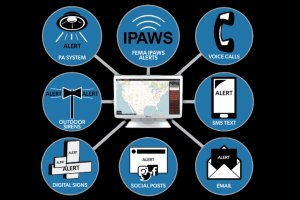
HQE Systems leverages a blend of sophisticated technology and accessible interfaces that simplify complex processes for emergency managers and first responders. This integration is crucial in high-stress environments, allowing users to operate efficiently without the need for extensive technical training. The systems are designed to provide clear, actionable information rapidly, ensuring that decision-makers can react swiftly to evolving situations.
Real-World Applications and Impact
The technology developed by HQE Systems addresses specific challenges frequently encountered during emergencies, such as data fragmentation and coordination difficulties. By utilizing advanced data analytics and cloud-based communications, HQE Systems facilitates a streamlined flow of information, akin to the systems implemented during the flood management efforts in Wisconsin. This approach ensures all stakeholders remain well-informed with accurate, real-time data, fostering a coordinated response effort that enhances overall operational effectiveness.
challenges frequently encountered during emergencies, such as data fragmentation and coordination difficulties. By utilizing advanced data analytics and cloud-based communications, HQE Systems facilitates a streamlined flow of information, akin to the systems implemented during the flood management efforts in Wisconsin. This approach ensures all stakeholders remain well-informed with accurate, real-time data, fostering a coordinated response effort that enhances overall operational effectiveness.
AI-Driven Predictive Models and GIS Integration
HQE Systems excels in implementing AI-driven predictive models that analyze vast datasets to forecast potential emergency scenarios. This predictive capability allows emergency managers to plan and respond proactively rather than reactively, enhancing the preparedness of communities facing potential disasters. Additionally, the integration of Geographic Information Systems (GIS) enables precise mapping of hazards, resources, and response logistics, facilitating targeted and efficient emergency operations.
that analyze vast datasets to forecast potential emergency scenarios. This predictive capability allows emergency managers to plan and respond proactively rather than reactively, enhancing the preparedness of communities facing potential disasters. Additionally, the integration of Geographic Information Systems (GIS) enables precise mapping of hazards, resources, and response logistics, facilitating targeted and efficient emergency operations.
Innovative Features for Enhanced Emergency Management
Further extending its technological prowess, HQE Systems incorporates IoT (Internet of Things) connectivity, which allows for the real-time monitoring of equipment and environmental sensors. This integration provides a continuous stream of data regarding weather conditions, structural integrity, and resource availability, crucial during ongoing disaster responses. For example, IoT sensors can provide immediate alerts on water levels during floods or structural stresses during earthquakes, enabling timely evacuations and interventions.
Commitment to Continuous Improvement and Adaptation
Recognizing the ever-evolving landscape of emergency management, HQE Systems is dedicated to continuous research and development. This commitment ensures that their solutions are not only aligned with current demands but are also adaptable to future challenges and advancements in technology. The company actively collaborates with industry experts and emergency professionals to refine their offerings, ensuring they meet the highest standards of reliability and effectiveness.
Conclusion
As the field of emergency management continues to demand more sophisticated, rapid, and coordinated responses, HQE Systems remains at the forefront with its innovative solutions that blend advanced technology with practical usability. By adopting HQE Systems, emergency managers equip themselves with the tools necessary for effective crisis management, ensuring preparedness and resilience in the face of disasters.
By choosing HQE Systems, emergency management professionals can ensure access to state-of-the-art technology and comprehensive support, enabling them to face any crisis with confidence and strategic advantage.
Part 5: HQE Systems’ Impact on Emergency Management
HQE Systems has introduced a range of innovative products and solutions tailored to meet the needs of modern emergency management. Two standout offerings from HQE Systems are the Unified Electronic, Indoor, and Outdoor Mass Notification Systems (EMNS) and integration capabilities using SiSA. These tools are designed to address common pain points in emergency management, such as slow response times, coordination difficulties, and information silos.
Unified EMNS: Bridging Communication Gaps
The Unified EMNS by HQE Systems represents a comprehensive solution for mass notification across various environments, ensuring that critical alerts and communications reach all relevant parties swiftly and efficiently. This system integrates indoor and outdoor notification capabilities, which is crucial during extensive emergency scenarios such as wildfires or industrial accidents.
Hypothetical Scenario: Wildfire Response
Imagine a scenario where a wildfire rapidly approaches a populated area. The Unified EMNS could be used to send real-time updates and evacuation orders across multiple platforms—sirens, SMS, email, and public announcement systems—ensuring that the message reaches everyone in the affected area, regardless of their current location or status. This immediate and broad-reaching communication capability would likely lead to a more orderly evacuation, reducing chaos and potentially saving lives.
SiSA: Enhancing Situational Awareness and Response
SiSA, or Safety in Seconds Application, integrates advanced data analytics, AI-driven predictive modeling, and real-time communication to enhance situational awareness and streamline emergency responses. SiSA’s platform allows emergency managers to view critical information on a single dashboard, analyze data in real-time, and make informed decisions quickly.
Hypothetical Scenario: Flooding in an Urban Area
Consider an urban flooding event exacerbated by a severe storm. SiSA could analyze real-time data from weather services, local sensors, and other sources to predict the flood’s progression and impact areas accurately. Using this information, emergency managers could prioritize resource deployment, such as sandbags and emergency personnel, to the most vulnerable neighborhoods. Simultaneously, SiSA could facilitate communication between different agencies to ensure a coordinated response, minimizing response times and improving overall efficiency.
Integration with Existing Systems
Both the Unified EMNS and SiSA are designed to integrate seamlessly with existing infrastructure, which means that institutions can enhance their emergency response capabilities without overhauling current systems. This integration is vital for cost-effective upgrading and ensures that improvements in emergency response are both scalable and sustainable.

Conclusion
The introduction of solutions like Unified EMNS and SiSA by HQE Systems marks a significant advancement in the field of emergency management. By addressing critical pain points through innovative technology, these systems enhance the ability of emergency managers to predict, prepare for, and respond to disasters more effectively. In any emergency, whether it be a natural disaster or a human-made crisis, the tools provided by HQE Systems could dramatically improve outcomes, ultimately contributing to safer and more resilient communities.
By leveraging such advanced technologies, emergency management can evolve from a reactive to a proactive stance, significantly mitigating the risks and impacts associated with disasters.
Part 6: Why Choose HQE Systems?
Choosing HQE Systems for your emergency management needs brings a host of advantages that stem from the company’s commitment to reliability, innovation, and expert leadership. With a team that combines veteran-led discipline with cutting-edge technological expertise, HQE Systems offers solutions that are not only robust and reliable but also adaptable and scalable to meet the diverse needs of various sectors such as public safety, healthcare, and education.
Reliability Rooted in Veteran Leadership
At the core of HQE Systems is a leadership team comprised of veterans whose experiences in high-stakes environments inform the development and deployment of each solution. This background instills a culture of discipline and precision, ensuring that all products meet the highest standards of reliability and effectiveness. Clients can trust that the solutions provided by HQE Systems will perform consistently well, even under the most demanding circumstances, which is crucial when lives are at stake.
Innovation Driven by Cutting-Edge Technology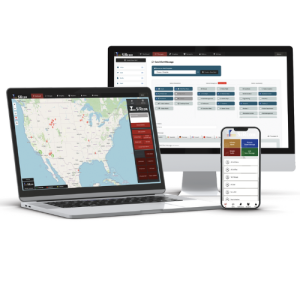
HQE Systems stands at the forefront of innovation in emergency management technologies. The company leverages the latest advancements in AI, real-time data analytics, and cloud computing to enhance the functionality and effectiveness of its emergency management solutions. This ongoing commitment to innovation means that HQE Systems continually adapts and evolves its offerings to address new challenges as they arise, ensuring that clients always have access to the most advanced tools available.
Adaptability and Scalability Across Sectors
The solutions provided by HQE Systems are designed to be both adaptable and scalable, catering to the specific needs of various sectors. This flexibility is evident in how the company’s products can be customized for different operational scales—from small local agencies to national governments—ensuring that each client receives a solution that fits their unique requirements. Whether it’s streamlining communications in a busy hospital during a health crisis or coordinating a city-wide evacuation during a natural disaster, HQE Systems’ solutions can be scaled to meet any challenge.
Sector-Specific Applications
Public Safety: Solutions from HQE Systems help coordinate and manage emergency responses effectively, ensuring public safety during critical incidents.
manage emergency responses effectively, ensuring public safety during critical incidents.
Healthcare: In the healthcare sector, HQE Systems enhances communication and crisis management capabilities, vital for handling events like pandemics or natural disasters impacting hospital operations.
Education: For educational institutions, HQE Systems ensures that students and staff are quickly informed and protected during emergencies, with systems that integrate seamlessly into school safety protocols.
Conclusion
By choosing HQE Systems, clients not only invest in top-tier emergency management solutions but also partner with a leader dedicated to advancing the field through technology and expertise. The adaptability and scalability of HQE Systems’ offerings ensure that every sector can enhance its preparedness and response capabilities, ultimately leading to safer, more resilient organizations and communities.
Empowerment Through Advanced Emergency Management Solutions
In summary, integrating HQE Systems into emergency management practices holds the promise of transforming how organizations approach preparedness and response. By harnessing advanced technologies and tailored solutions, stakeholders can redefine their strategies for handling crises effectively. Consider the possibilities of enhancing resilience and safeguarding communities through proactive measures and innovative tools.
Take the next step in elevating your emergency management capabilities. Reach out to HQE Systems today for a personalized demonstration or consultation. Explore how our solutions can be customized to suit your organization’s unique needs, empowering you to navigate emergencies with confidence and efficiency.

HQE Systems is a certified Veteran Owned Company. For more information about HQE Systems Inc. and its emergency management, electronic security, and integration solutions, please visit www.hqesystems.com.

Contact: David Ditto (Early Warning Systems Subject Matter Expert)
Email: David.Ditto@hqesystems.com
Phone Number: (843) 872-7020
____________________
HQE Systems, Inc. | HQE is a Minority-Owned Service Disabled Veteran Owned Small Business (SDVOSB) providing full solutions for: Mass Notification Systems, Electronic Security Systems, Software Development Services, Contract Support, and Prototyping Services. As a brand-agnostic solutions provider, HQE prides itself in providing the BEST solution for the project. HQE possesses over 30+ factory certifications and reseller licenses to ensure our clients receive the highest quality service at the ideal budget. HQE can provide full design, installation, integrations, upgrades, and long-term maintenance support for any size and scope project.

